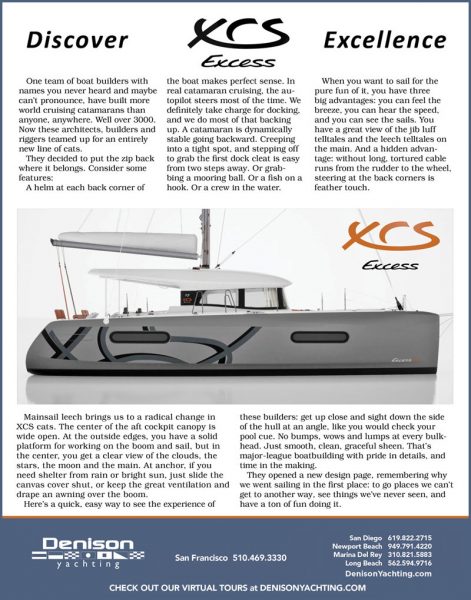
Radical Sailing: America’s Cup ‘Sky Jumps’; Kite-Powered Racing Boats
In the immortal words of the Steve Miller Band, “I wanna fly like an eagle . . . To the sea . . .”
Apparently, so does the new America’s Cup class.
“While the AC75 is unique, so is one of its vices — the Sky Jump — where the 7,500-kg yacht jumps almost completely clear of the water, before crashing back with all the elegance and grandeur of a humpback whale broaching,” wrote Sail-World on Monday, adding that the phenomenon made the boats rear up “clear of the water at a takeoff angle sharper than that of a commercial airliner taking off from a runway.”
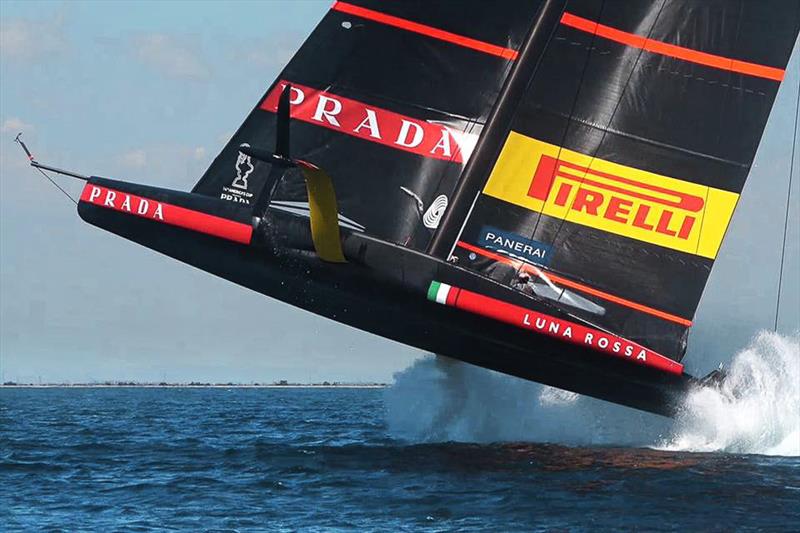
Sail-World said that the AC75 is “as much aircraft as it is a boat.” The wings on an AC75 are much different than the daggerboards used on the last two classes of America’s Cup catamarans. “On the AC75, foiling system is very similar to an aircraft wing, comprising the wing itself, with controllable flaps on the trailing edge.”
Sail-World said that crew use a “flight control” to manage the foils and rudder, and lift the boat from the water into foiling mode. “When racing, the flight control has to be manually controlled by the crew. During testing, the teams are allowed to use a completely computer-driven system, free of crew intervention. That’s fine in a controlled state, and probably better than in crew operated mode, but it is a bit like a driverless car — when things go wrong, the outcome is spectacular.”
A Kite-Powered Boat to Race Across Oceans
“At first glance, the ArmorKite 650 is as intriguing as its deck is empty. To sail it, we’ll clearly have to forget everything we’ve learned to take for granted. What’s more, even though it’s not apparent at first glance, there’s no keel, or even ballast. Stability comes from the hull form, thanks to a 2.2-m (7-ft 3-in) beam, and a design reminiscent of the Mini Transat 650 class.”
So read a recent article in Yachting World about a new class of “boat” that’s completely powered by a kite.
“The ArmorKite has only two lines for trimming, and a tiller; the boat can be sailed double-handed easily. Once out into the bay, our sail radically differs from a traditional outing. First, a drogue is deployed astern, to limit drift while we prepare and ‘hoist’ the kite. Even more unusually, we contact the Coast Guard by VHF to warn them about our forthcoming test sail. (Twice well-meaning sailors have triggered the rescue services after seeing a boat without a mast, apparently dismasted and trying to set up a jury rig while deploying the kite!)”
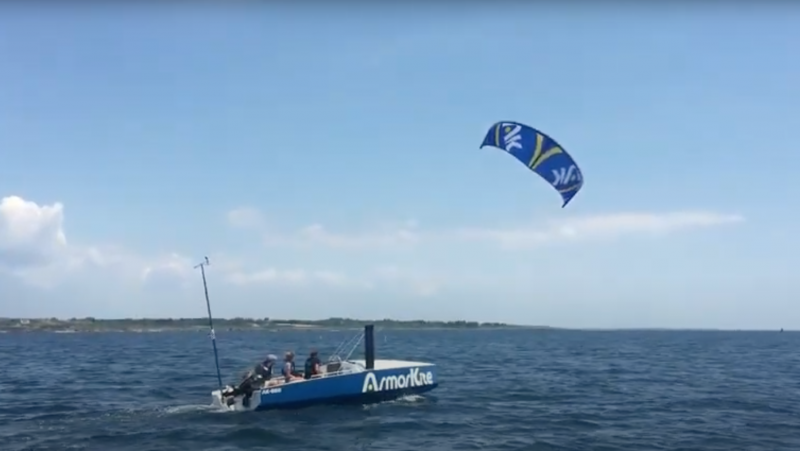
Yachting World said the kite is controlled by an electric winch, and takes two people to deploy. In a low-wind range, “the kite tends to stick to the water, and take off can be tricky,” but that the speed is phenomenal, and usually matches the true wind speed.
“The ArmorKite is extremely sensitive on the tiller, and also sensitive to the positioning of the crew, whose total weight can easily equal that of the boat itself. We don’t get close to beating the record of 19 knots the team has already achieved, but sailing at 10-12 knots when the true wind is barely 15 knots is more than enough to put a big smile on your face.
Yachting World also dispelled a common myth. “When it comes to turning up to close-hauled, sceptics will say that a kite can’t go upwind. But the ArmorKite holds a windward course that is comparable to a keelboat, sailing at 30° either side of true wind, at speeds very similar to a Mini 650 of six to seven knots in 10-12 knots of wind. But where the boat becomes even more impressive is downwind. We had nine knots showing on the GPS with 11 knots of wind dead astern. What conventional boat could offer that?”
There are potentially numerous applications that kites might have on boats of all sizes, from small racers, to cruisers, to commercial vessels.
“So, if there’s a foiling revolution underway, will the next be a kite revolution?” Yachting World asked. “There’s quite a way to go before this solution could be universally adopted. Even if learning to handle the kite takes just a couple of weeks, according to its inventors, the constant attention and adjustments required to the kite during sailing put a real brake on its usage outside of competition.”
Emily Zugnoni: Lessons from my Grandfather
Emily Zugnoni grew up sailing on the Estuary and San Francisco Bay aboard her grandfather’s Tartan 30 Lelo Too.
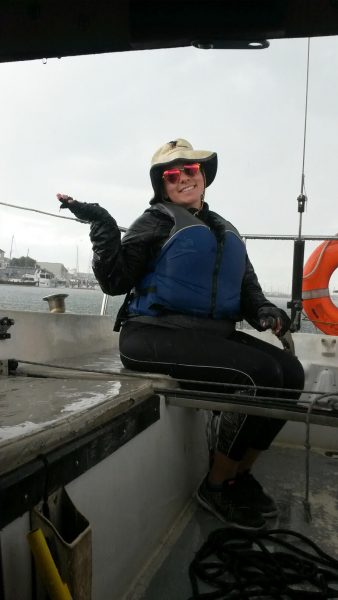
In her 20s, she turned her passion for sailing into a career by earning her Coast Guard Merchant Mariner License and instructing at the Alameda Community Sailing Center (ACSC) and at Club Med in Florida. Emily later inherited Lelo Too (and her crew!), and they continue to race on the Oakland-Alameda Estuary weekly. Emily is currently the program director at Alameda Community Sailing Center and an instructor at Club Nautique.
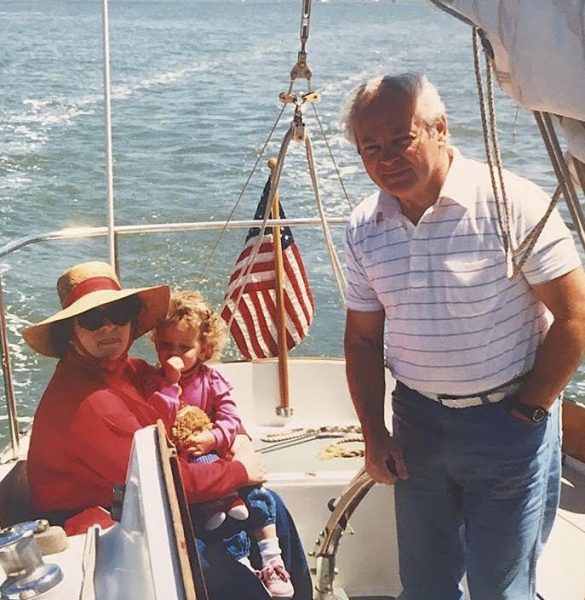
Where did you grow up sailing?
I grew up sailing on the Oakland Estuary and SF Bay with my grandfather on his Tartan 30, Lelo Too. In my twenties, I began teaching at Alameda Community Sailing Center (ACSC) and sailing dinghies out of Ballena Bay.
Who taught you to sail?
I’m still learning from co-workers/crew/competitors all the time, but the foundation of my sailing knowledge came from my grandfather, Emile Carles, who kept every Latitude 38 ever printed in his garage, by the way. Though I’d been a passenger for family daysails since I was a toddler, it wasn’t until college, while tagging along on my grandpa’s beer can races, that I developed a curiosity and understanding of how the boat and sails worked.
What kind of sailing do you do now?
After my grandpa passed away in 2017, I inherited Lelo Too (the boat and crew!), and we still race on the Estuary year-round. We’ll do the occasional Bay race, but my weekends are mostly spent teaching dinghy sailing at ACSC or Basic Keelboat at Club Nautique. When the mood strikes, I’ll take an ACSC Laser or FJ out for a joyride off the Encinal Boat Ramp.
What’s your favorite thing about teaching sailing?
My favorite thing is watching students, whether they’re 7 or 70 years old, conquer their fears or self-doubt on the boat and start taking charge and trusting their capabilities.
The most gratifying part of teaching is shifting the perspective of a student who, based on previous exposure to boating, believed sailing is overwhelmingly complex or must involve getting yelled at. It’s fun breaking this technical topic down to the basics for newbies, and proving to them that yelling won’t make the boat go any faster.
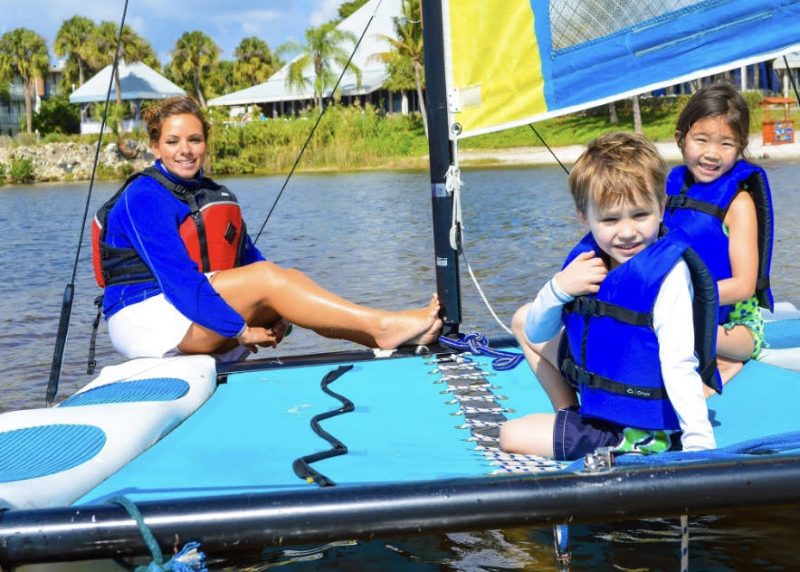
What’s your favorite thing about sailing, or why do you sail?
Obviously, there’s something magical about being on the water and in the breeze. When that’s combined with the competitive aspect of racing, it’s my favorite thing ever. I love anticipatory rides from the dock to the start line (even when the start is at the end of my dock). I love when the action is so intense that you can’t possibly focus on anything other than just rounding the next mark. And I love the post-race analysis that takes place on the exhausted ride home from the finish or while sipping Manhattans back at the dock.
When I was a kid, the boat was appealing because my favorite people were there, it felt like an adventure, and there were unlimited chips and cookies. As an adult, the boat still feels like a place where adventure, fun and camaraderie are top priority and all the rules and stress of the world can wait for you on shore.
Can you name some of your favorite sailing books?
The Racing Rules of Sailing!
Denison Yachting — Discover Excellence
Check out the virtual tours at denisonyachting.com.
Rediscovering Cruising San Francisco Bay on Mother’s Day
Sometimes the simplest ideas are the best. We ran into our friend Kevin Moore and his family on the docks at the Corinthian Yacht Club on Mother’s Day weekend. At his wife Tori’s request, “Our tradition for Mother’s Day is for me to pick a surprise destination within three hours and plan a weekend getaway,” Kevin explained. “The key is it has to be someplace we’ve never been before. The pandemic posed a real challenge, but taking the boat was a great solution. We spent one night at the dock at the Corinthian YC [they’re members] and one on the hook in Paradise Cove.”
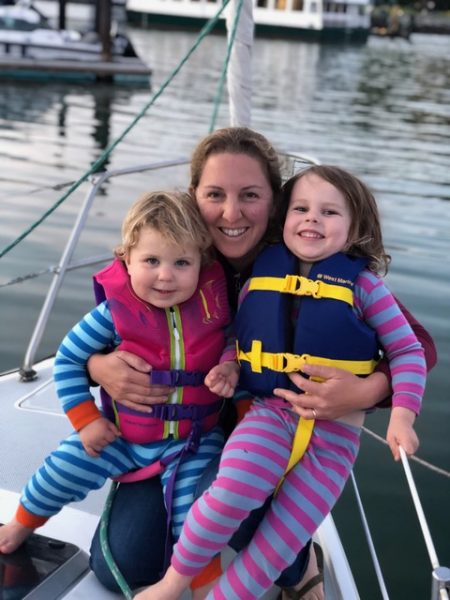
The Moores are partners in the Catalina 270 Blue Ribbon II, which they keep at Pier 39. The Catalina 270 was an upgrade from their prior boat, the Catalina 27 Blue Ribbon. Kevin and crew have actively raced both boats in the Corinthian Friday night beer can series despite sailing the long delivery every Friday from Pier 39 to Tiburon and back. So heading across the Bay to Corinthian was not at all unusual. They’d done it many, many times before, but not as a cruising destination.
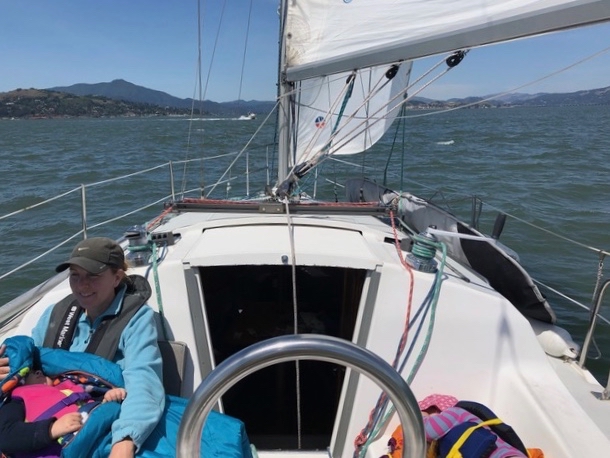
The trip did entail some real-life adventures — they had to sail onto the guest dock at CYC on Sunday because the engine wouldn’t start. Kevin said, “It felt like old times,” since, even with the newer boat, they had some age-old issues.
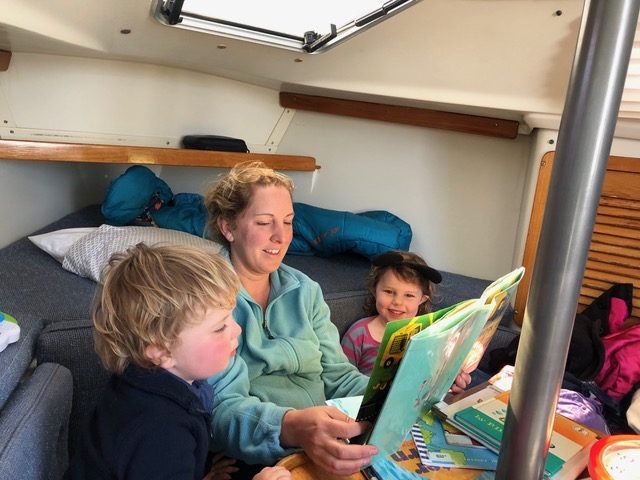
After the trip, Kevin said, “I’m inspired to plan a longer getaway somewhere up toward the Delta. I wonder if you know of any not-too-far-upriver anchorages, Or, someplace I could look up that info,” (Check out all the story links from the Delta Doo Dah.) We’ll throw that out to our readers: What do you think? Benicia? Other ideas? This summer is a good one to stick around for a sailing staycation on San Francisco Bay. The nice thing is you can ‘shelter in place’ but your ‘place’ can move around. Where are you thinking of going, and what would you recommend? Drop your thoughts into the comments section below.
Vendée-Arctique Solo Race to the Arctic Circle
While most regattas and ocean races are announcing cancellations or postponements for 2020, the IMOCA Globe Series has gone the other way. Following the cancellations of two previously planned transatlantic races that would have taken the fleet from France to the US East Coast and back, the IMOCA class has taken the opportunity to announce the new Vendée-Arctique-Les Sables d’Olonne solo race instead. Taking place just four months before this year’s Vendée Globe, the race will be the only racing opportunity for about a third of this year’s record-setting fleet to actually qualify for the race. This one-off solo race to the Arctic Circle and back will serve as the first and last chance for several new builds — delayed in launching by the virus — to test their speed before the main event in November.
Beginning on July 4 from Les Sables-d’Olonne, France (the starting place of the Vendée Globe), the race will take sailors from France to a turning mark off the Azores before sailing due north to the edge of the Polar Circle, then back to Les Sables-d’Olonne. While not necessarily representative of a mostly-downwind race around the world via the Southern Ocean, this 3,600-mile route should expose sailors to almost every condition imaginable, from beating or fetching across Biscay and likely reaching to the Azores, to full-on high-latitude low-pressure systems and then light air in the many expected transition zones. The race should serve as a phenomenal proving ground before the ninth Vendée Globe.
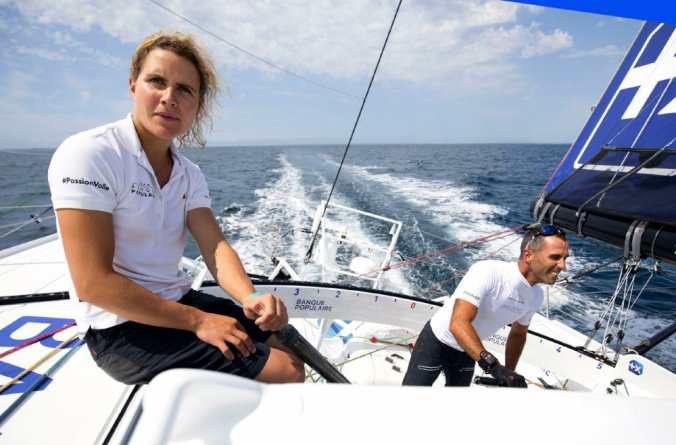
With sponsors, sailors, the IMOCA class and global sailing fans suffering serious withdrawals and lack of content to follow, this race represents an opportunity for the IMOCA class to draw in new eyeballs during a time of reduction in professional sporting events. With no public race village, sailors tested and quarantined before the race, and the socially-distant nature of solo ocean racing, the IMOCA Globe Series has taken every precaution they can to responsibly run the race with no conflicts or risk of outbreak, and with full governmental support.
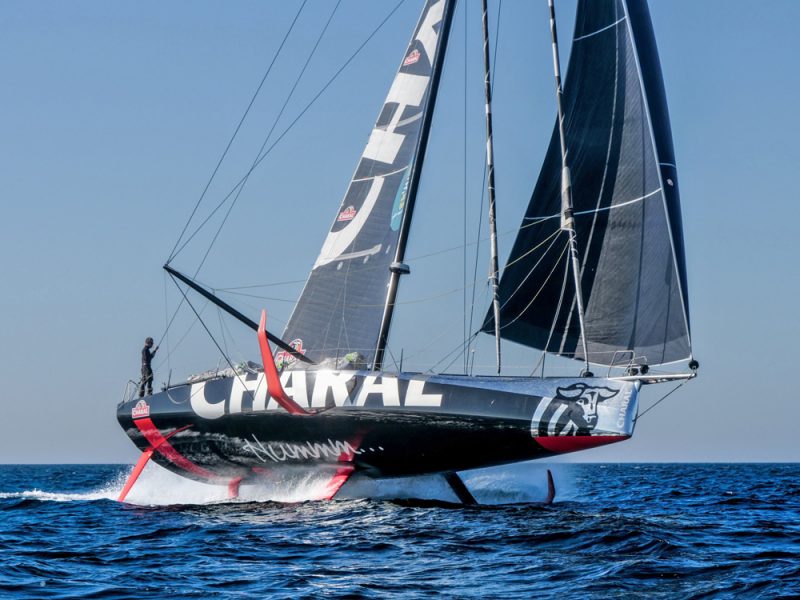
From a sporting perspective, this new race should be a thriller. Several hungry skippers and new boats are keen to show what they’ve got just before the Vendée Globe, which received an incredible 37 applications as of the November 2019 deadline. Of those 37 applications, a record-setting nine were brand-new builds, including a trio of new foilers designed by someone other than VPLP and Guillaume Verdier, the dominant designers of the last decade.
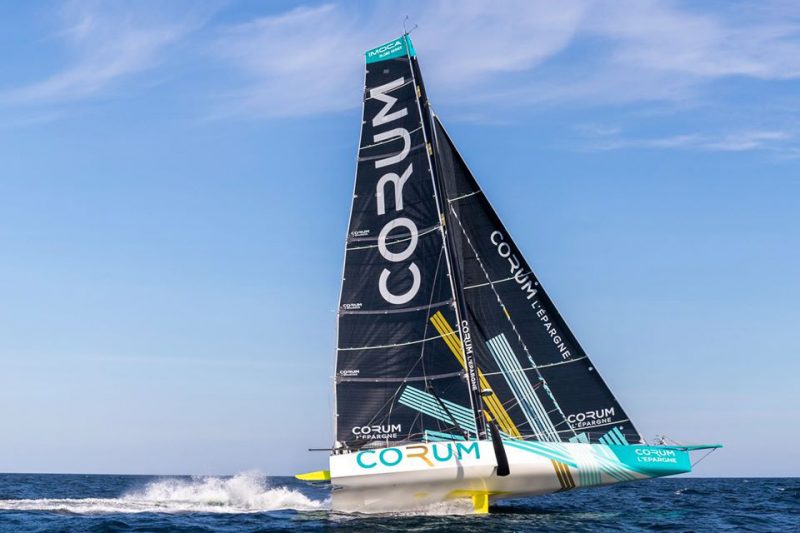
Argentinian designer ‘Juan K’ (Juan Kouyoumdjian) has made a return to the class and has just seen the second of his two new boats launch. French designer Samuel Manuard of Mini and Class 40 fame had a new build recently launched for Armel Tripon. Eleven skippers still need to qualify for the Vendée Globe, several new boats need to rack up some miles, and much of the rest of the fleet are eager to test their speed. So we would be surprised to see fewer than 20 boats hit the starting line come July 4. We’ll keep you updated on the race in July, as it will almost certainly be the most exciting thing going in the sailing world!

